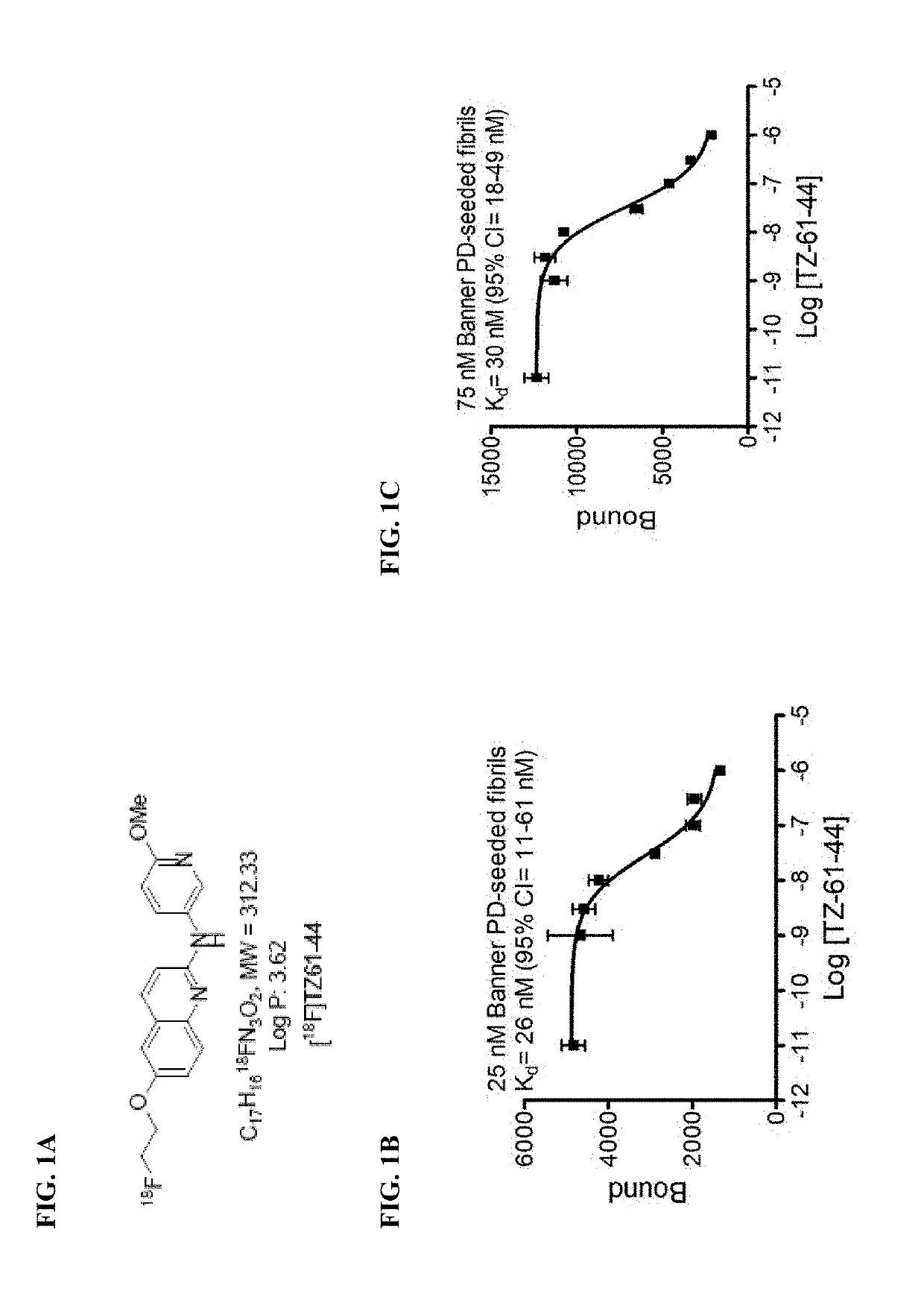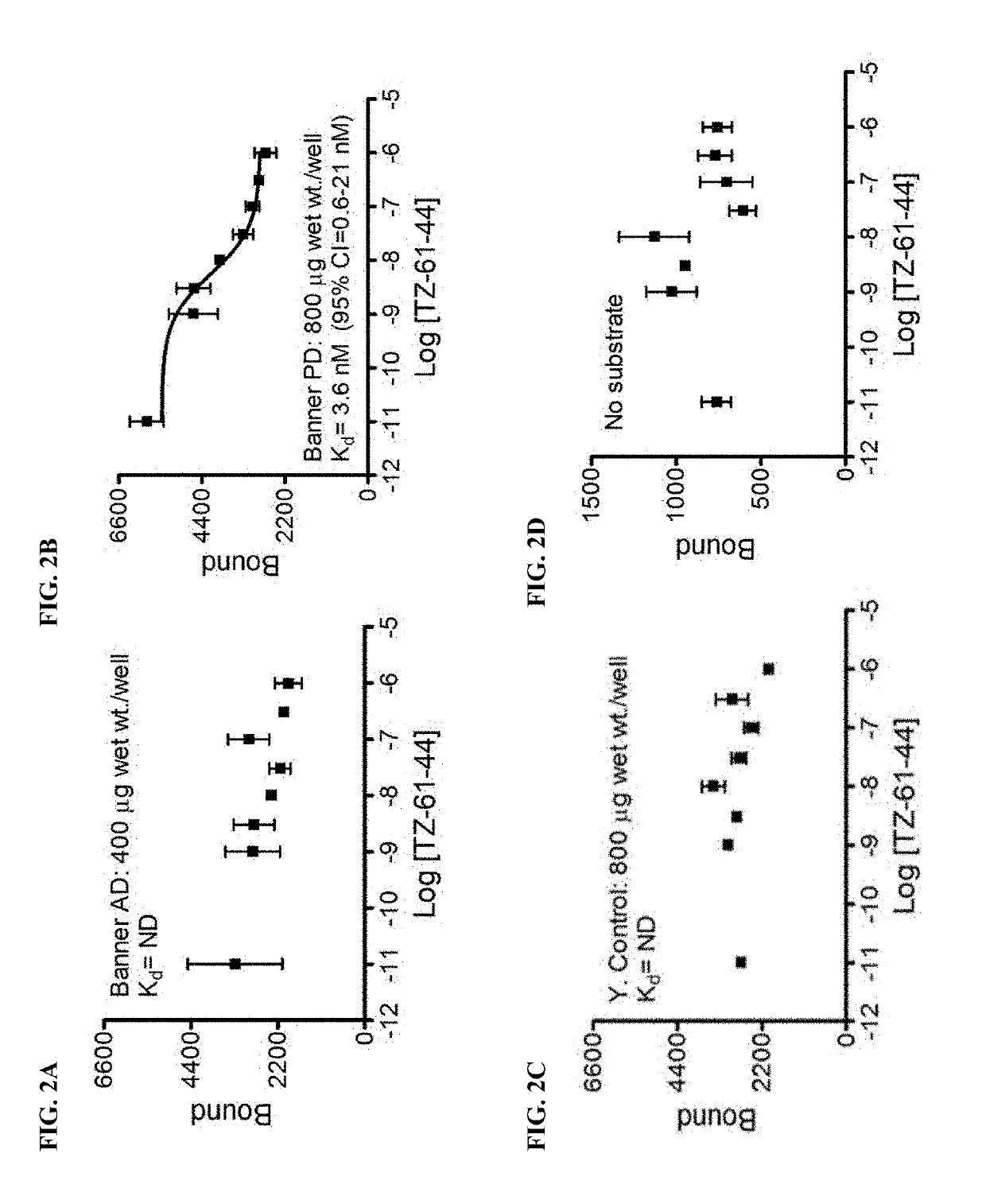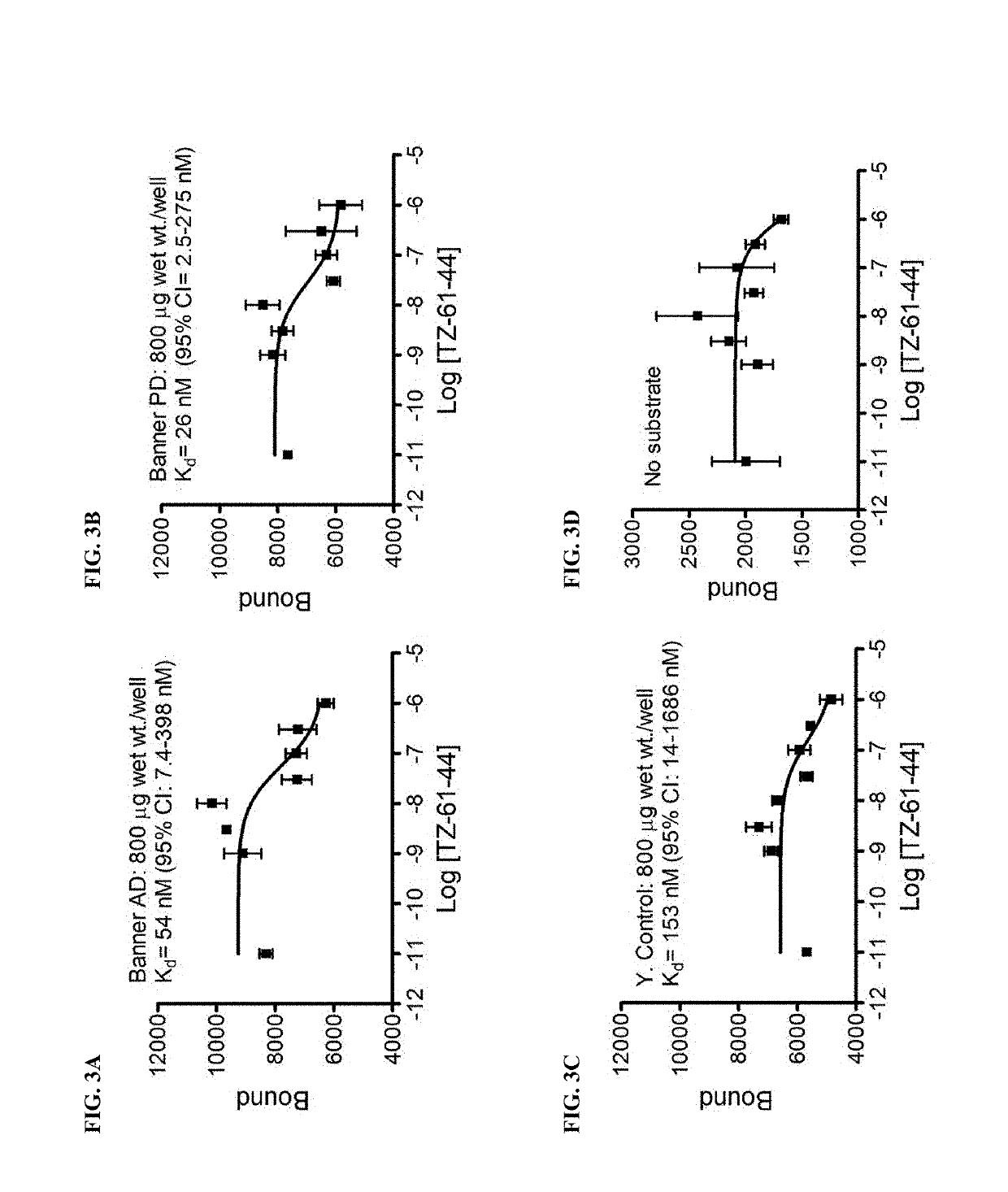Alpha-synuclein ligands
a technology of alpha-synuclein and ligand, applied in the field of alpha-synuclein ligand, can solve the problems of affecting cell viability, underlying aggregates are detrimental, and specific proteins are no longer functional
- Summary
- Abstract
- Description
- Claims
- Application Information
AI Technical Summary
Benefits of technology
Problems solved by technology
Method used
Image
Examples
example 1
of Analogues Having Methoxy Groups on Quinolone Ring
[0156]New analogues possessing methoxy group on the 7- and 8-position of the quinoline ring were prepared with the goal of improving selectivity for α-synuclein versus Aβ and tau proteins. The palladium-catalyzed coupling reaction gave the product in higher yield than direct aromatic nucleophilic substitution. To confirm that the secondary NH plays an important role for the binding affinity, the secondary amine was converted to a tertiary amine with a methyl protection to give compound TZ61-66 (Scheme 1). Detailed synthesis is shown in Examples 2 and 3 below.
example 2
of TZ61-61 and TZ61-62
[0157]
[0158]To a solution of 2-chloro-8-methoxyquinoline (39 mg, 0.20 mmol) in anhydrous dioxane (6 mL) was added pyridin-2-amine or pyridine-3-amine (19 mg, 0.20 mmol), Cs2CO3 (130 mg, 0.40 mmol), Pd2(dba)3 (18 mg, 0.02 mmol), Xantphos (12 mg, 0.02 mmol) successively under nitrogen. The mixture was stirred at 100° C. in a sealed tube overnight. Water was added to quench the reaction and the mixture was extracted with EtOAc. The combined organic phase was washed with saturated aqueous sodium chloride, and dried over anhydrous Na2SO4. The organic phase was concentrated in vacuo and the residue was subjected to silica gel chromatography (hexane / EtOAc 1 / 1, v / v) to give the target compound TZ61-61 as a yellow solid (20 mg, 40% yield) or compound TZ61-62 as a solid (33% yield).
example 3
of TZ61-23
[0159]
[0160]To a solution of MOMO group protected TZ61-20 (62 mg, 0.20 mmol) in anhydrous CH2Cl2 (2 mL) was added CF3COOH (1 mL) at 0° C. The solution was stirred at room temperature overnight. Water was added to quench the reaction and the mixture was extracted with EtOAc, the combined organic phase was washed with saturated sodium bicarbonate, water, saturated sodium chloride, dried over anhydrous Na2SO4. The organic layer was concentrated and the residue was subjected to silica gel chromatography (hexane / EtOAc 1 / 1) to afford product TZ61-23 as a light yellow solid (45 mg, 84% yield).
PUM
| Property | Measurement | Unit |
|---|---|---|
| wet weight | aaaaa | aaaaa |
| temperature | aaaaa | aaaaa |
| temperature | aaaaa | aaaaa |
Abstract
Description
Claims
Application Information
 Login to View More
Login to View More - R&D
- Intellectual Property
- Life Sciences
- Materials
- Tech Scout
- Unparalleled Data Quality
- Higher Quality Content
- 60% Fewer Hallucinations
Browse by: Latest US Patents, China's latest patents, Technical Efficacy Thesaurus, Application Domain, Technology Topic, Popular Technical Reports.
© 2025 PatSnap. All rights reserved.Legal|Privacy policy|Modern Slavery Act Transparency Statement|Sitemap|About US| Contact US: help@patsnap.com



